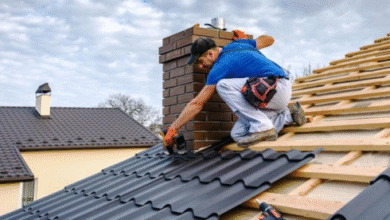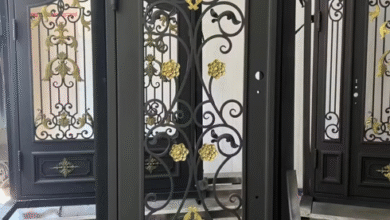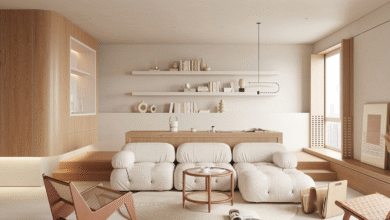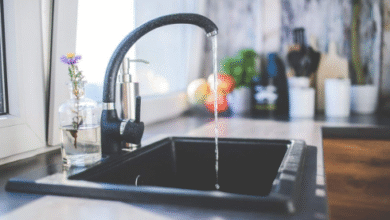Understanding Commercial Ventilation Regulations and Compliance

Commercial Ventilation Regulations Overview
Commercial ventilation regulations are put in place to ensure the health and safety of occupants in commercial spaces. These regulations outline specific requirements for ventilation systems to maintain proper indoor air quality and prevent the buildup of harmful pollutants. By adhering to these regulations, building owners and managers can create a comfortable and healthy environment for employees, customers, and visitors.Failure to comply with commercial ventilation regulations can result in serious consequences, including fines, legal liabilities, and potential health hazards. Non-compliance may lead to poor indoor air quality, which can contribute to respiratory issues, allergies, and other health problems. It is essential for commercial property owners to stay informed about ventilation regulations and ensure that their systems meet the necessary standards to promote a safe and sustainable indoor environment.
Commercial Ventilation regulations are crucial for maintaining a healthy indoor environment in commercial spaces. Compliance with these regulations is essential to prevent health hazards and ensure proper indoor air quality. Building owners must stay informed and ensure their ventilation systems meet the necessary standards.
Importance of Ventilation Compliance in Commercial Spaces
Proper ventilation compliance in commercial spaces is not just a matter of following rules and regulations; it is essential for the health and well-being of individuals occupying these spaces. Ventilation systems play a crucial role in maintaining indoor air quality by ensuring the circulation of fresh air and the removal of pollutants and contaminants. Failure to adhere to ventilation regulations can result in poor air quality, which may lead to various health issues among occupants, reduced productivity, and an overall unpleasant environment.Moreover, ventilation compliance is also crucial for the safety of commercial buildings. Inadequate ventilation can increase the risk of indoor air pollutants reaching harmful levels, potentially causing respiratory problems, allergies, and other health concerns. By ensuring that ventilation systems are designed, installed, and maintained in accordance with regulations, commercial spaces can provide a safe and comfortable environment for occupants, reducing the likelihood of health issues and improving overall well-being.
Key Components of Commercial Ventilation Systems
Commercial ventilation systems are comprised of several key components that work together to ensure optimal indoor air quality and comfort in commercial spaces. One fundamental component is the intake vents, which allow fresh air to enter the building. These vents are strategically placed to draw in outside air while preventing the ingress of contaminants. Another essential element is the exhaust system, responsible for removing stale air, odors, and pollutants from the building. By effectively expelling indoor air, the exhaust system plays a pivotal role in maintaining a healthy and safe environment for occupants.Ductwork is another critical component of commercial ventilation systems, serving as the pathways through which air is distributed throughout the building. Properly designed and installed ductwork ensures that air reaches all areas of the commercial space, promoting even air distribution and consistent indoor air quality. Additionally, ventilation fans are essential components that help regulate airflow and maintain proper ventilation levels. These fans are typically installed in strategic locations to facilitate air movement and exchange, aiding in the removal of contaminants and ensuring a well-ventilated environment.
Common Ventilation Regulations for Commercial Buildings
When it comes to ensuring the safety and well-being of occupants in commercial buildings, ventilation regulations play a crucial role. One common regulation mandates that commercial spaces must have a sufficient amount of fresh outdoor air introduced and circulated throughout the building to maintain indoor air quality. This is typically achieved through the installation of ventilation systems that control airflow and remove contaminants from the indoor environment.Another important regulation focuses on the proper maintenance and cleaning of ventilation systems in commercial buildings. Regular inspections and servicing of these systems are necessary to ensure they are functioning effectively and efficiently. Failure to comply with these maintenance requirements can lead to a buildup of pollutants, mold, or other harmful substances in the air, jeopardizing the health of building occupants. By adhering to these regulations, building owners can create a safer and more comfortable indoor environment for employees, customers, and visitors.
Understanding Indoor Air Quality Standards
Indoor air quality standards play a crucial role in maintaining a healthy and comfortable environment within commercial spaces. These standards outline the acceptable levels of various pollutants and contaminants present in the air, ensuring that occupants are not exposed to harmful substances that could impact their well-being. By adhering to indoor air quality standards, businesses can create a space that promotes productivity, reduces health risks, and enhances overall occupant satisfaction.Adhering to indoor air quality standards involves regular monitoring and assessment of air quality parameters such as temperature, humidity, carbon dioxide levels, and particulate matter concentrations. By monitoring these factors, businesses can identify any potential issues or deviations from the established standards and take proactive measures to address them promptly. Additionally, maintaining proper ventilation systems is essential in achieving and maintaining compliance with indoor air quality standards, as adequate ventilation helps to dilute pollutants and ensure a fresh and healthy indoor environment.
Natural Home Solutions are essential for maintaining indoor air quality standards in commercial spaces. Regular monitoring of temperature, humidity, CO2 levels, and particulate matter is crucial. Proper ventilation systems help dilute pollutants, ensuring a healthy environment that promotes productivity and occupant satisfaction.
The Role of Exhaust Systems in Commercial Ventilation
When it comes to maintaining a healthy indoor environment in commercial spaces, exhaust systems play a crucial role in the overall ventilation system. These systems are responsible for removing contaminated air, odors, and pollutants from the building, ensuring the air quality remains at acceptable levels for occupants. By effectively expelling stale air and introducing fresh air into the space, exhaust systems help create a comfortable and safe environment for both employees and customers.In addition to improving indoor air quality, exhaust systems also play a key role in controlling humidity levels within commercial buildings. By removing excess moisture from the air, these systems help prevent mold and mildew growth, which can have harmful effects on both the building structure and occupants’ health. Properly designed and maintained exhaust systems not only contribute to a healthier indoor environment but also help protect the building’s integrity and prolong its lifespan.
Ensuring Proper Ventilation Design and Installation
Proper ventilation design and installation are crucial aspects of creating a comfortable and healthy indoor environment in commercial spaces. When designing a ventilation system, it’s essential to consider the specific needs and layout of the building to ensure efficient airflow and air quality. Proper installation is equally important to guarantee that the system functions correctly and effectively eliminates pollutants and odors from the indoor space.Ventilation design should take into account factors such as building size, occupancy levels, and the types of activities conducted within the space. Utilizing the expertise of professionals in the field can help ensure that the system is tailored to the unique requirements of the commercial building. Thorough planning and precise installation are key to optimizing airflow and maintaining a consistent level of fresh air circulation throughout the premises.
Benefits of Compliance with Commercial Ventilation Regulations
Ensuring compliance with commercial ventilation regulations offers a multitude of advantages for both building occupants and property owners. Firstly, a well-designed and properly functioning ventilation system significantly improves indoor air quality by facilitating the circulation of fresh air and the removal of pollutants and contaminants. This contributes to a healthier and more comfortable environment, reducing the potential for respiratory issues and enhancing overall well-being within the space.Moreover, adhering to ventilation regulations not only promotes a healthier indoor environment but also enhances energy efficiency. By maintaining an efficient ventilation system, businesses can reduce energy consumption and lower operational costs. Additionally, proper ventilation can help regulate temperature and humidity levels, creating a more pleasant and productive workspace for employees and visitors alike. This dual benefit of improved air quality and energy efficiency underscores the value of compliance with commercial ventilation regulations.
Maintaining and Monitoring Commercial Ventilation Systems
When it comes to commercial ventilation systems, regular maintenance and monitoring are essential to ensure optimal performance and compliance with regulations. Proper maintenance involves inspecting and cleaning all components of the ventilation system, including ductwork, filters, fans, and vents. Monitoring the system involves regularly checking airflow rates, humidity levels, and air quality to identify any potential issues that may impact the efficiency of the ventilation system.By staying proactive with maintenance and monitoring of commercial ventilation systems, businesses can avoid costly repairs, ensure a healthy indoor environment for occupants, and prolong the lifespan of their ventilation equipment. Additionally, monitoring can help in detecting any deviations from expected performance standards early on, allowing for timely adjustments or repairs to be made. Regular maintenance and monitoring not only contribute to regulatory compliance but also support energy efficiency and overall comfort within commercial spaces.
Potential Consequences of Non-Compliance with Ventilation Regulations
Failure to comply with ventilation regulations in commercial spaces can lead to a myriad of negative consequences. Inadequate ventilation can result in poor indoor air quality, which can affect the health and well-being of occupants. This can lead to increased instances of respiratory issues, allergies, and discomfort among building occupants.Moreover, non-compliance with ventilation regulations can also lead to decreased employee productivity and increased absenteeism. Poor ventilation can create an uncomfortable and stuffy environment, leading to decreased focus, concentration, and overall morale within the workplace. Additionally, failure to meet ventilation standards can result in fines, penalties, and even legal actions against the building owners or managers for not adhering to the necessary regulations.




